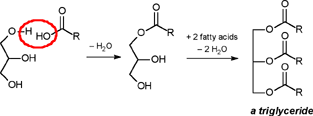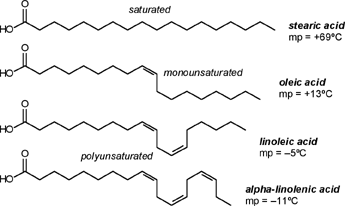A CHEMIST RESPONDS TO “A SCIENTIFIC EXPERIMENT.”
(A review and/or rebuttal to “A Scientific Experiment” by Jaime J. Weinman)
Well, it’s a good thing that science experiments on webpages aren’t subject to the traditional anonymous peer review process. It they were, Jaime would probably get a reply something like this:
“Dear Mr. Weinman,
“We regret that we cannot accept your manuscript for publication in its current, or likely any, form. The reviewers have pointed out a number of glaring deficiencies and omissions, briefly summarized below.
“Although your scientific curiosity is to be applauded, your experimental methodology seems exceedingly limited, and lacks many important details. Your report describes only a single experiment, with no repetition or statistical analysis, and no meaningful description of the nature of the sample (beef or pork? smoked or unsmoked? jumbo or regular?). Similarly, your description and discussion of results is purely qualitative and exceedingly terse. What mass of fluid was extracted from the hot dog? What was the initial mass and volume of the sample? The fluid is characterized solely as “fat”, but no analytical details are provided to support this conclusion. Your characterization of the final product as “literally, a stick” was met with particular disbelief from one reviewer, who points out that a microwave-induced transformation of protein to cellulose would defy all known laws of chemical and biochemical reaction. Finally, your conclusion seems to be little more than “hot dogs have a lot of fat in them”, a conclusion of little or no scientific merit in that it would be immediately apparent to any numbskull who reads a nutrition label.
“In conclusion, we feel that your experimental design and implementation would rank well below par at any high school science fair, and recommend that for your next project, you try building a trebuchet. Because trebuchets are freaking cool.”
But that’s mostly because the anonymous peer reviewers for scientific manuscripts can sometimes be real pricks. Truth be told, there are actually some cool things to be learned from this. I’m not sure “don’t eat hotdogs because they’re, like, all fatty and gross and stuff” is one of them (because you should already have known that) but it’s a nice experimental confirmation of that nutritional info, which, to be fair, is something that nobody ever bothers to read and doesn’t actually tell you what you should know, unless you’ve taken a fair amount of biochemistry.
In brief, meat is pretty much just protein, fats/oils (aka lipids), and water. The microwave heats up the water, which heats up the rest of it, which once the temperature gets hot enough will then melt all the fatty material. (How does the microwave work? You should ask How Stuff Works, of course.) This, of course, is when the now liquid mixture of fats, oils, and water starts oozing out. Repeated enough times, this will extract all the fluid, and the remainder will be overcooked zero-moisture hardened protein. – with, you know, some onion power and stuff.
Which would actually happen with any kind of meat. Zapping anything in the microwave for long enough makes it unappetizing. Starting with something already unappetizing doesn’t help. Besides, if you were in the mood to watch oozing fat, it seriously doesn’t get much better than hotdogs.
A random hot dog package I looked at yesterday more or less broke it down as follows:
A typical hot dog is about 35 to 40g, and supplies your body with about 100 calories of energy. (Except that they aren’t really calories; they’re kilocalories. That is, every nutritional “calorie” is actually 1000 calories, equivalent to the amount of energy it takes to increase the temperature of one litre of water by one degree Celsius. Why or how this stupidity arose has never been explained to me.) Of that mass, 8.5g is fat, or about 20-25% by mass. However, fat supplies your body with about 9 calories per gram (more than twice as much as a gram of protein), which means that the fat represents something like 75% of the total calories. “A stick injected with fat” has it backwards. More like “fat wrapped in sausage casing for your dining convenience”.
Of that total fat, there are about 3.7g of saturated fats (the really bad stuff), about the same of monounsaturated (much of which may be trans fats, which are almost as bad as the fully saturated and will most likely soon be listed separately on the label to help you avoid them). Notably, hardly any of it is the (relatively) healthy oils, the polyunsaturated fats.
Which is just about the point at which your eyes start to glaze over and you quit trying to sort out what the nutrition label tells you, and instead you get distracted by the next package of hotdogs, because those ones have !!!omigod cheese right inside the wiener!!! and you buy those instead. Which is a shame, because there’s some cool and pretty easy-to-grasp chemistry on that label.
Fats and oils are triglycerides. They are compounds that arise from a reaction of glycerol with three molecules called fatty acids. Fatty acids are long chains of carbon atoms, most of which are connected to hydrogen atoms, except for one at the end of the molecule, which forms a carboxylic acid group, COOH. Below are two depictions of both glycerol and a fatty acid called stearic acid, which has eighteen carbon atoms. In the first drawings, all the C and H atoms are shown explicitly, but writing them all out like that is a giant pain, so nobody does it. In the second drawings, a standard shorthand is used, where lines represent bonds between carbon atoms at the vertices, and the Hs connected to those C atoms are omitted. They’re still there, and we can infer their presence because each carbon atom forms four bonds — if you don’t see four bonds explicitly drawn, the missing ones are connecting to H atoms.

Glycerol reacts with a fatty acid in a condensation reaction, where the two molecules join together and a molecule of water is lost. The H and O atoms that generate the water are circled in red, and the long carbon chain of stearic acid is represented by R. If that reaction happens three times, you get a triglyceride: or a glycerol condensed with three fatty acids. The three R chains don’t have to be the same, but the properties of the resulting compound depend a lot on what those R chains look like.

Stearic acid is a saturated fatty acid. It’s saturated because every carbon on the chain is holding as many H atoms as possible, and no more could be added. If we remove two H atoms from two neighbouring C atoms, the C atoms must now form a second bond to one another, because each has lost a bond to the missing H. You get a double bond (represented by a double line), and the acid molecule is now monounsaturated, because there is one point of unsaturation, one point on the chain to which those two H atoms could be added back. If there is more than one double bond, the chain is polyunsaturated.

Note what happens to the structure when the double bonds appear. A saturated chain can extend out in a relatively linear shape, and if you get three of them next to each other in a triglyceride, that’s exactly what they do. This makes it easy for the chains and the molecules to pack together and stay next to each other, so triglycerides with saturated chains tend to be solids at room temperature, and we call them fats. In contrast, the double bonds put kinks in the chains, so they can’t line up as efficiently. Less efficient packing requires less heat to separate the molecules and allows them to flow past each other. Consequently, triglycerides composed primarily of unsaturated chains tend to be liquids at room temperature, and we call them oils. You can see the same trend in the melting points of the above series of the acids themselves, which change dramatically even though these acids all have eighteen carbon atoms in the chain. As the degree of unsaturation increases, the melting point drops.
Now, to a point, fats are good. You need fats to live. Dietary fats supply your body with energy, they’re required to transport fat-soluble vitamins, and they get incorporated into your cell membranes. But if you live in North America, you’re almost certainly eating far more than you need, and most of what you’re getting comes from animals. Just like in the hotdog, that means a lot of saturated fats, which is bad for you. Saturated fats raise your cholesterol, increase your LDL:HDL ratio, and lead to coronary heart disease. Vegetable oils and fish provide you with a greater ratio of unsaturated fats, and they tend to do the reverse. You need more salmon and sunflower oil, less beef and butter.
What about trans fats?
Note the arrangement of the chain about the double bonds. In the unsaturated fatty acids, each C atom in the double bond is connected to one H atom and one C atom that continues the chain to each side. Normally, the C chains (labeled R again) are on the same side of the double bond, which is called a cis arrangement. But there’s another possible configuration, where the chains are on the opposite sides, called the trans arrangement.

Often, your food contains “partially hydrogenated vegetable oils”, in which H atoms are added to some of the double bonds of a polyunsaturated fat to reduce the number of unsaturations. This extends the shelf life of the product, because double bonds are the initial site of oxidation reactions that lead to fats going rancid. But another effect is that the double bonds that remain can get converted from cis to trans. This in turn affects the structure of the chain – the trans fatty acid doesn’t have a kink in the chain like a normal unsaturated fat does. Instead, it can line up nice and snug with nearby chains just like it were saturated. Not surprisingly, the melting point comes back up, and trans fats pretty much cause all the same health problems that saturated fats do, even though they get listed on the nutrition label as unsaturated. (Compare the structure and melting point of the trans elaidic acid, below, with the cis oleic, above.)

So, bottom line, yeah, hot dogs are bad for you. No kidding. Hot dogs are little happy heart-attacks-on-a-bun with mustard and relish. Oh, and let’s not forget the super-duper nitrite content. (Goodbye botulism, hello colon cancer! I should, in the interest of scientific precision, point out that a diet high in nitrates (commonly added to red meats so that the Clostridium botulinum don’t kill you) has never been definitively shown to cause cancer in humans, despite much in the way of tantalizingly correlative data. But that likely does not mean it isn’t true, only that the study has never been done. Strangely, the funding agencies won’t give you money to try, on purpose, to give people cancer by forcing them to eat nothing but hotdogs for six months in a double-blind crossover study. Go figure.) Anyway, bottom line is this: reduce your fat intake, especially the saturated and trans fats, and use more sunflower and canola oil. Go eat some blueberries, an apple, anything. And while we’re at it, why not drag your lazy ass up from in front of your computer and go outside already. Just wear sunscreen.